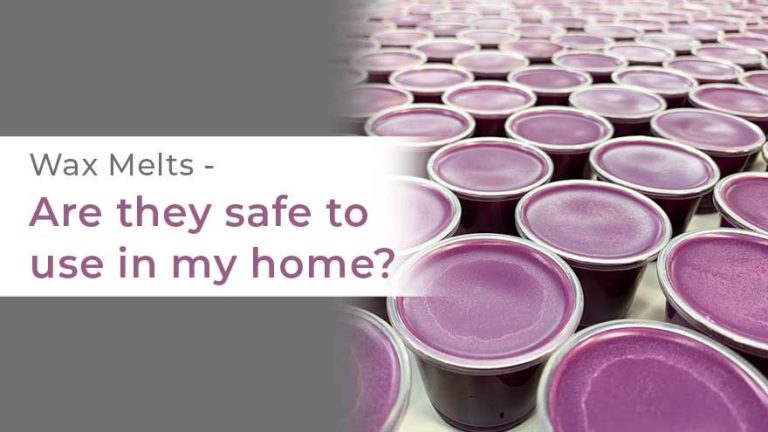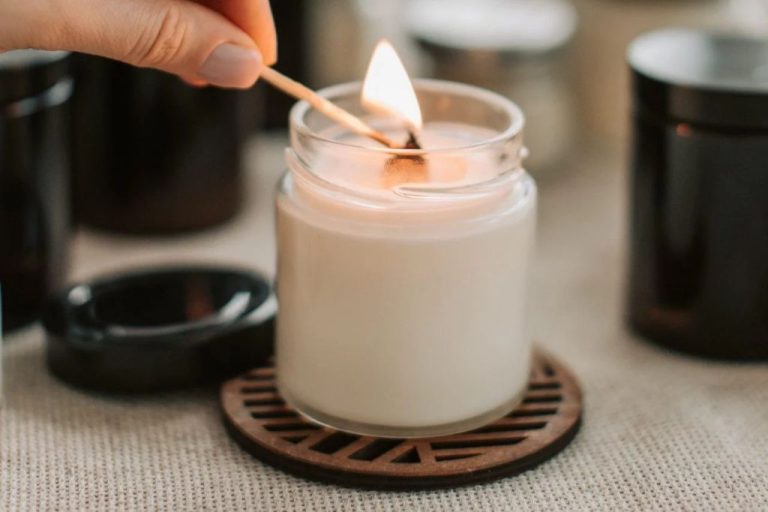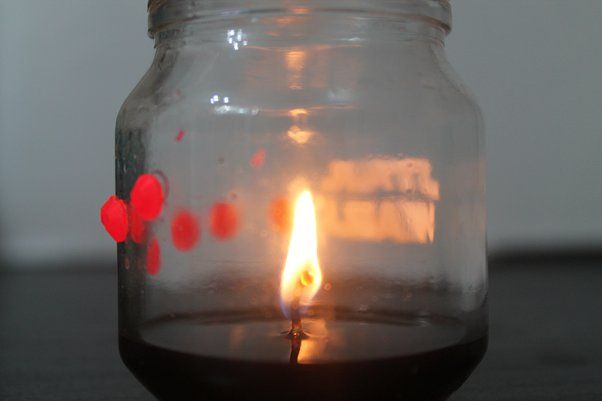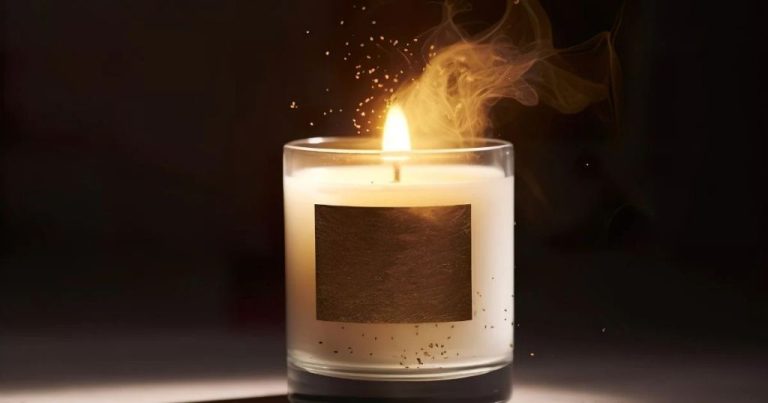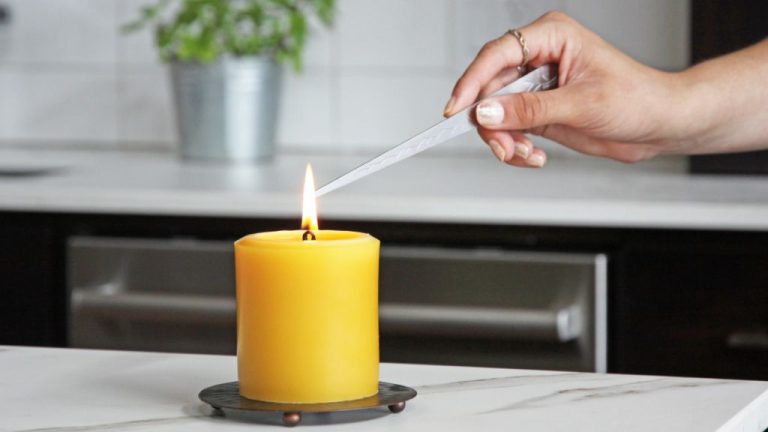How Much Is A Typical Candle?
Candles are wax objects that contain a wick in the center which is lit to provide light and ambiance. They come in a vast array of sizes, shapes, colors and scents and can be made from various types of wax. Candles are commonly used in homes to create a warm and inviting atmosphere, for religious ceremonies, aromatherapy, emergency lighting, and celebratory events like birthdays and anniversaries.
A “typical” candle generally refers to a standard cylindrical pillar candle that is around 6-8 inches tall with a 2-3 inch diameter. These medium-sized candles in neutral colors are the most common and versatile for everyday use. However, there is a growing popularity of more unique, decorative candles in various shapes, sizes and scents. Scented candles, in particular, have become very trendy home accessories and gifting items. The global candle market is predicted to grow steadily in the coming years with increasing consumer demand for candles using natural, eco-friendly ingredients.
Candle Sizes
Candles come in a variety of standard sizes like votives, pillars, tapers, tealights, and more. The dimensions and burn times can vary greatly between candle sizes.
Some common candle sizes include:
- Votive candles – These small candles are around 1.5 inches wide by 2 inches tall and provide around 15-20 hours of burn time (https://www.temu.com/common-candle-sizes-5030437674072-s.html). They are designed to fit into small glass votive holders.
- Pillar candles – Pillar candles are thicker cylindrical candles that range from 2-3 inches in diameter. Their height can vary from 4 inches to over 12 inches tall. Pillar candles generally provide anywhere from 30-80 hours of burn time depending on their size (https://storables.com/articles/what-size-candles-for-candle-holders/).
- Taper candles – Taper candles are long, thin candles that are approximately 1/2 inch wide. They range in height from 4 inches to over 12 inches. The burn time of taper candles is usually around 7 hours.
- Tealight candles – Tealights are very small candles (under 1 inch wide and 1/2 inch tall) designed to fit into tealight holders. They provide around 3-6 hours of burn time.
Candle Waxes
Candles are made from different types of wax, each with their own properties and characteristics. Some of the most common candle wax types are:
Paraffin Wax – This is the most widely used candle wax. It is a byproduct of petroleum refining and is highly refined and odorless. Paraffin wax is inexpensive, burns cleanly, and can hold fragrance well. However, some find the source of paraffin wax to be environmentally unfriendly. Paraffin also tends to release more soot as it burns compared to other waxes. Source
Soy Wax – Made from hydrogenated soybean oil, soy wax is a renewable and environmentally friendly option. It burns slower and cleaner than paraffin with less soot. Soy wax is also biodegradable. However, it is more expensive than paraffin and does not hold fragrance as well. There are different varieties of soy wax with different melt points. Source
Beeswax – Beeswax is a natural wax made by honey bees. It has a sweet, honey-like scent when burning. Beeswax candles burn brighter and slower compared to other waxes. However, beeswax is expensive and difficult to work with due to its high melt point. It may also produce more smoke.
Other waxes like coconut, palm, and gel wax are also sometimes used in candles. The type of wax impacts the burn properties, scent throw, environmental footprint, cost, and overall quality of a candle. It’s important to consider the pros and cons of each when selecting candle wax.
Candle Scents
Some of the most popular candle scents include vanilla, lavender, fresh linen, lemon, and mahogany teakwood according to Most Popular Candle Scents. These aromas are created by adding fragrance oils into candles during manufacturing. Fragrance oils contain concentrated aromatic compounds that evaporate from the wax and scent the air when burned. Popular fragrance oils like patchouli, jasmine, pine, and sage are blended by candle makers to produce signature scents.
There are hundreds of different scent options to choose from, but classic, fresh, and woodsy fragrances tend to be customer favorites year after year according to Top Sellers – Our Most Popular Candle Scents. The scent profile can completely change the mood and experience of burning a candle. Many people select candles based primarily on the scent to match their home decor, create a relaxing ambience, or make the air smell fresh and pleasant.
Candle Wicks
The wick is a crucial component of candles. It serves to draw wax up through capillary action and provide a flame. Wicks are typically made from materials like cotton, wood, paper, and more that enable capillary flow of liquid fuels. Cotton is one of the most common and popular wick materials due to its clean burn and minimal scent and smoke production.
Wick sizes and types vary based on the candle size and wax being used. Larger candles require thicker wicks that won’t drown in large pools of melted wax. Harder waxes like soy and palm benefit from larger wicks, while softer waxes like paraffin can use smaller wicks. Custom candle makers must test different wick types to find the optimal pairing for their unique candle recipes and desired burn styles. General wick guidelines recommend:
– Smaller votive and container candles: CD 3-7 wicks
– Standard jars: CD 7-15 wicks
– Large pillars and vessel candles: CD 16-24 wicks
No matter the wick type, proper wick height and maintenance through trimming promotes the safest burn by avoiding drowning, mushrooming, or clogging.
Candle Containers
Candles come in a variety of containers, with the most common options being glass, tin, and ceramic.
Glass Containers
Glass containers are a popular choice for candles. Some pros of using glass include:
- Allows you to see the candle wax and flame clearly
- Can be decorative with etched or colored glass
- Withstands heat well
Some cons of glass containers:
- Can break if dropped
- Not as portable as tin or ceramic
“CORHAD 14pcs Embossed Candle Jar containers with lids – Empty candle holders for DIY Candle Making – Clear Glass votive candle Cylinder Jars for Soy Wax Pillar Candles Aromatherapy (70ml, 100ml)” [Source]
Tin Containers
Tin containers are also very common for candles. Pros of tin containers include:
- Inexpensive option
- Very portable and durable
- Come in a variety of sizes
Some cons of tin are:
- Less decorative looking than glass
- Can get hot to the touch when candle is lit
Ceramic Containers
Ceramic containers provide another decorative option for candles. Pros of ceramic:
- Lots of decorative shapes, colors, and patterns
- Withstands heat well
- Provides decorative candle lighting
Some cons of ceramic containers:
- Heavier than glass or tin
- Can chip or crack if dropped
- More expensive than tin
Overall, glass, tin, and ceramic candle containers all have their advantages and disadvantages. Factors like cost, durability, appearance, and portability may influence which option is best for different needs.
Candle Prices
The price of a candle can vary greatly depending on a number of factors. On the low end, basic candles from big box stores typically range from $1 to $5. These are often smaller votive or tealight candles made from cheaper paraffin wax. At major retailers, standard sized (around 8-12 oz) candles tend to cost $10-20. For premium or luxury candles, prices go up from there.
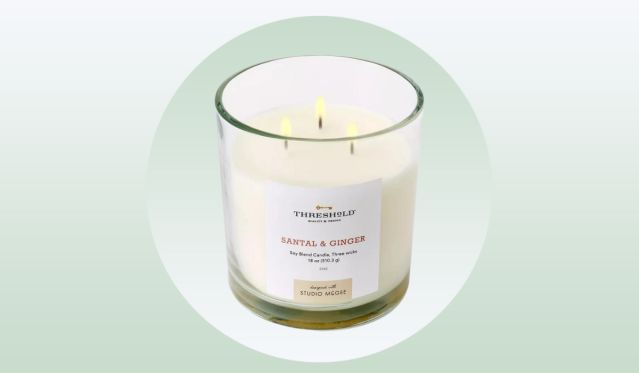
Some of the main factors affecting candle pricing are:
- Materials – More expensive waxes like soy, beeswax, or palm wax drive up costs. Luxury glass or ceramic containers also add cost.
- Scent – Using higher concentrations of quality essential oils costs more than synthetic fragrances.
- Size – In general, larger candles require more wax and scent so they are priced higher.
- Branding – Well-known brands or designers can demand premium pricing for their candles.
On the high end, some luxury candle brands charge $50-100 or even more for status candles in fancy vessels, with fine fragrances, and premium packaging. While basic candles tend to max out around $20. The average candle price overall is $12.30 (Candle Industry Fact Sheet). The range demonstrates how many factors go into candle pricing.
Luxury vs Basic Candles
Luxury candles tend to be made with higher quality ingredients, attention to detail and presentation, and unique or complex scents compared to basic candles. Some characteristics of luxury candles include:
- Natural soy, beeswax, coconut wax, or other premium waxes rather than cheaper paraffin wax (https://www.meltcandleshop.com). Paraffin releases toxic fumes as it burns.
- Custom, unique fragrance blends rather than simple single note scents. Many use essential oils, higher fragrance loads, and complex multi-layered scents (https://valentincandlecompany.com).
- Artisanal, handmade production in small batches versus mass machine production.
- Premium packaging like glass, crystal, or ceramic containers versus basic tin or plastic.
- Details like wood wicks that crackle while burning, double wicks, or hand pouring each candle.
These higher quality ingredients and production methods lead to significantly higher prices for luxury candles. While basic candles may cost $5-10, luxury candles are priced from $25 up to $80 or more. The different scent complexity and burn experience impart a sense of craftsmanship and exclusivity that justifies the higher prices for many luxury candle buyers.
Where to Buy Candles
There are several options when it comes to purchasing candles, each with their own pros and cons.
Online
Buying candles online opens up a huge selection beyond just your local stores. Popular online candle retailers include Yankee Candle, Bath & Body Works, and Amazon. The convenience of shopping from home and having items shipped is a major pro. However, not being able to smell a candle before buying can be a con when shopping online.
Big Box Stores
Major retailers like Target, Walmart, and Cost Plus World Market have affordable candle selections in store. The convenience and ability to smell options are pros when shopping in person. However, the selection is usually more limited compared to specialty retailers or online.
Boutiques
Local candle shops and boutiques offer unique, specialized options you won’t find at major chains. The ability to discover new scents and brands is a major pro. However, prices are often higher than mass retailers. Examples of popular candle boutiques include Candles 4 Less and Brooklyn Candle Studio in New York City.
Conclusion: Typical Candle Prices and Features
Candles come in a wide range of sizes, shapes, colors, scents, and prices. A standard candle may cost between $1-$15 depending on the size, wax, wick, scent, and container. Small votive or tealight candles often cost $1-$5, while large pillar candles can cost $10-$15. Medium-sized jars in the 8-12 oz range are typically $5-$10.
Basic paraffin wax candles with cotton wicks are generally the most affordable options. Soy, beeswax, and other natural wax candles cost a bit more. Adding more elaborate scents and containers also increases the price. Luxury candles from high-end brands can cost $25-$75 for large, artisanal, creatively scented and packaged candles. Candles can be purchased at most grocery stores, pharmacies, home goods stores, craft stores, specialty candle shops, and online retailers.
In summary, factors like size, wax type, fragrance, wick, and container all impact the price of a candle. There is a very wide range of prices from $1 to $75+ based on how basic or luxurious a candle is designed to be. But a typical, moderately-sized scented candle in a glass jar costs about $5-$15 at most general retail stores.

